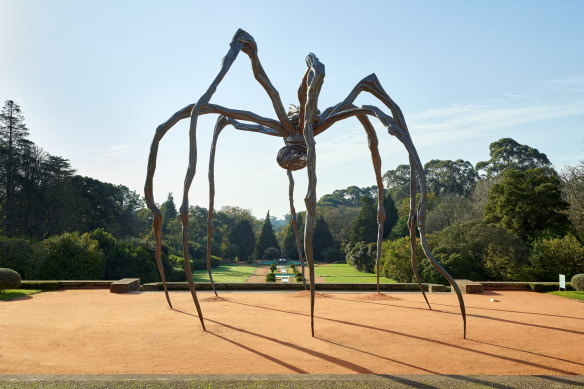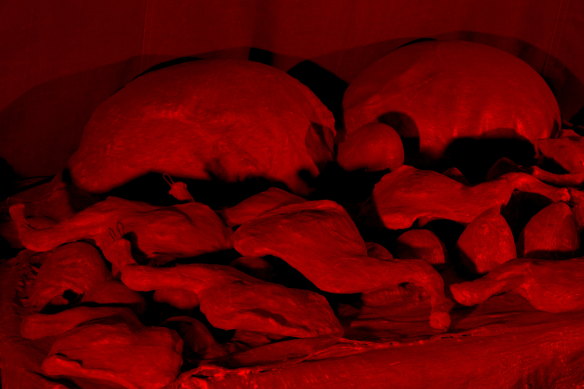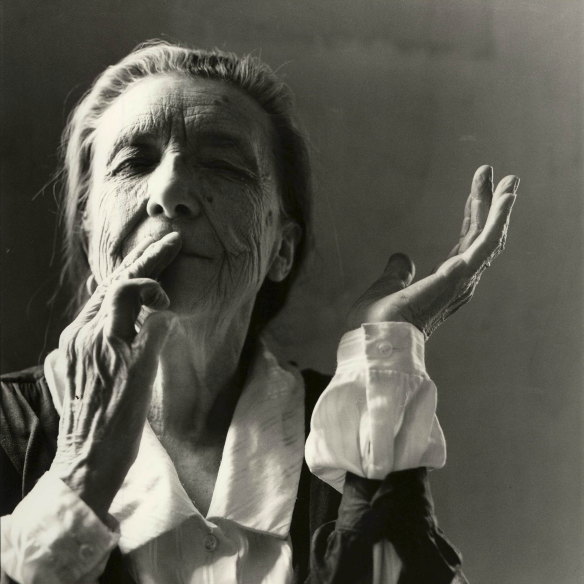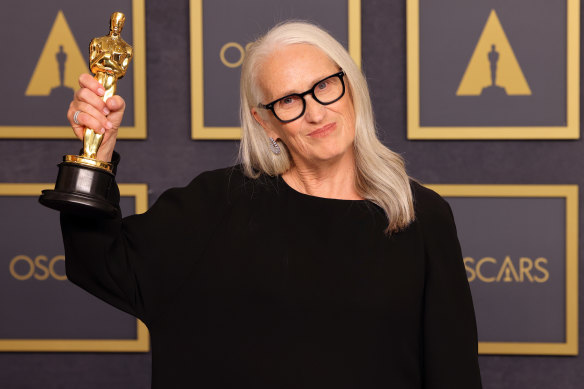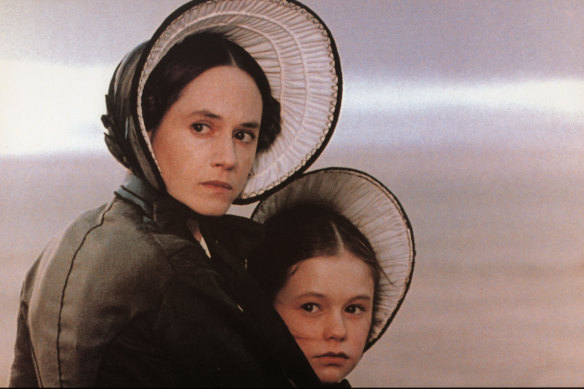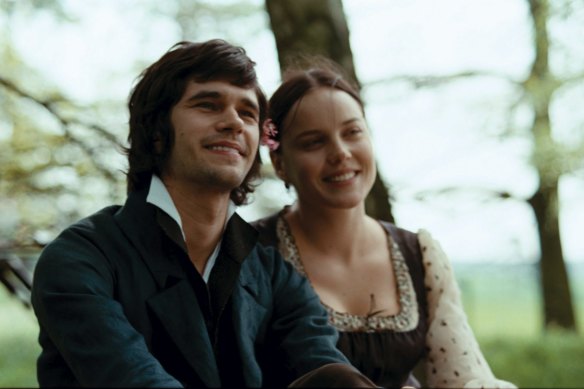By Jane Campion
Louise Bourgeois’s Maman (1999), installed during the exhibition Louise Bourgeois: To Unravel a Torment at the Museu de Arte Contemporânea de Serralves, Porto.Credit: Filipe Braga
Save articles for later
Add articles to your saved list and come back to them any time.
I believe it was in 2000, at the new Tate Modern, that I glimpsed Louise Bourgeois’ Maman. Sidled past it, hurrying to catch a plane, but the deed was done. It was my first encounter with Louise, and I never forgot that audacious creation, that boldness, the aliveness of the provocation. It was stamped into my psyche like fairytale images. Red Riding Hood, Bluebeard, Snow White. Once heard as a child they are never forgotten.
The spider is huge, and there is a paradox with its size. The spider is the size a human would appear to a spider. It goes further, like an echo chamber, because, while even the largest spider is relatively small, there is a creepiness to them that is writ large in our fear and horror, and that fear is writ large in the size of the spider Louise has made. So it becomes the psychic spider.
Louise Bourgeois’ The Destruction of the Father (1974).Credit: Ron Amstutz
The image of the vast female spider plays with the fear of women, of their supposed unpredictability, their lack of rationality, and their desire to entrap. Men especially, but children too, feel that fear of the grasping mother and the web of need she spins. Somehow, Louise herself plays into this story, like a fairytale godmother possessing otherworldly powers that can help you. Louise is not a good witch or a bad witch, she’s an art witch. She’s out for herself, which I like, and she shares in an enormously personal way. For me that’s where the love is. She shows herself; nothing is hidden. Her life is lived for art and her art is her – the mystery, pain and wild impulses of being her.
Louise is important to me. I recognised her as my art idol, my female icon. Broken, mysterious, wounded, angry, deep, powerful, mine. She led me to the female web like it was a playground full of glories and stories and pungency. In so many ways, I felt seen by Louise, understood by her creations. Her use of her own clothes, for example. Sometimes when I can’t sleep, I lie in bed and remember all my important clothes. My brown velvet mini dress with embroidery and a matching bonnet from when I was 15. A mauve long-sleeved shirt that matched a deeper mauve maxi skirt that was laced up the side. The shoes I always bought too small because I thought my feet were too big, especially a pair of brown patent leather lace-ups with a trainer heel. My own heels bled. I didn’t care; I put plasters on them.
Louise Bourgeois in 1990.Credit: Yann Charbonnier
And Louise’s mending. As a 13-year-old, wearing dull brown stockings to school, I’d get a little hole in the knee and then I’d stretch it. I’d use brightly coloured cottons to darn across the hole, to make a beautiful woven patch, something I tried to do very perfectly. More than anything, I remember the shame of wanting to be admired, to be chosen, to be loved. Without a man loving me in some important way, I was orphaned, I didn’t exist, I couldn’t be free. This web of my own thinking and female thinking in general was exquisitely painful. Filmmaking, telling stories, was my release.
I do believe that Louise shows you the paradigm and the way out. I recognised myself, my sister, my mother in Louise, but her power was in her willingness to confess, to meet the shadowy painful wounds of the psyche and befriend them, to be curious and even, literally, to bandage them. I can recall feeling that the secrets of girlhood formed a true and rich territory – not known to men, not discovered in cinema. Rather than compete with the boys at film school for the cranes and the rigs, I thought, “Let them have them, I’ll go underground into the world of memory and secrets and explore that.” I was in my 20s and extremely energised because I had cracked the mirror of the false self and crossed over to the true self, the psyche. In this world I was very free, very confident. I knew it was real, I knew it had power, and I could trust it.
Jane Campion with the Oscar for The Power Of The Dog in 2022.Credit: Getty
When you’re in touch with the psyche, you’re not flinching, you’re not performing for anyone, you’re not trying to be liked or loved. It’s such an attractive space to be in, such a solid place, and so full of surprises. You don’t know what’s in there, and in you, until you start looking. Dreams are a way to begin. Nightmares are gifts from the psyche. They prepare you for things not working out. No one’s prepared for the unhappily ever after. Another way to reach the solid place is to go over things you remember. Why is this thing, of all things, held in my mind forever? Didn’t Louise say that she kept watch over her memories, that she needed them?
I do find objects very powerful. The piano in The Piano (1993) is a metaphor for civilisation and expression. When Ada pulls out one of the keys, it’s like she’s beginning to unravel. After her finger has been cut off, we see she has begun wearing a silver prosthetic finger. It’s beautifully made but it also shows the injury. It remembers the attempt to control her.
Anna Paquin and Holly Hunter in The Piano.
In The Power of the Dog (2021) I was very aware that the rope, which is the murder weapon, is made from the hide of an animal raised on the ranch, and that the process of creating it was also the means by which Phil, the victim, became friends with Peter, the murderer. And that when Peter placed the rope under his bed, it also had erotic value. Louise understood this so well – the way the same object can carry and knot together different meanings.
When I was writing Bright Star (2009) and thinking about Fanny Brawne and her sewing, I went to the Portobello Market in London and bought a small Regency period chemise, because the stitches were so unbelievably small and perfect. I pinned it to the wall in front of me while I was writing to remind me of what Fanny could make, her absorption in that world of sewing. Like Louise, who loved her mother’s talents as a repairer, I have an overwhelming respect for women of that period and their creations, which few people value but which have hours and hours of work in them.
I love in Louise how the fabric figures are made. They’re not perfect. They look bandaged. Everything is reduced to just what’s needed. Everything that’s there is important. One image that really gets me is the little metal high-heels on the kneeling textile figure, in High Heels 1998. They’re so neat and decorous in the sex act. They say something unsayable. Or the fabric couples, with their dark embraces and strange passions, which break me on the inside. Someone said to me Louise hands us problems to resolve. But it’s not that, it’s more personal. It’s like she’s birthed the problem for us, and we get to see that child. Like Janet Frame or Emily Dickinson, she makes things that have a desire to be. How do you discuss someone like that? You don’t want to diminish their achievement by so-called understanding them.
John Keats (Ben Whishaw) and Fanny Brawne (Abbie Cornish) in a scene from Jane Campion’s Bright Star.
My guides are mostly female. Dickinson, Frame, the Brontë sisters, Lina Wertmüller, Liliana Cavani. All are women with skin in the game. They all searched for the true life over the false life. But no one is as vivid and monumental as Louise. Nothing compares with her uneasy mix of beauty, truth-sharing, dark hidden memories, pain, shame and comedy. She’s gone to the depths. She will lead you there and keep you there. You will be needing a thread to lead you back. It’s like an umbilical cord. You may not want to cut it.
Louise Bourgeois: Has the Day Invaded the Night or Has the Night Invaded the Day is at the Art Gallery of NSW from November 24 to April 28. This is an extract from the exhibition catalogue edited by Justin Paton.
Most Viewed in Culture
Source: Read Full Article
